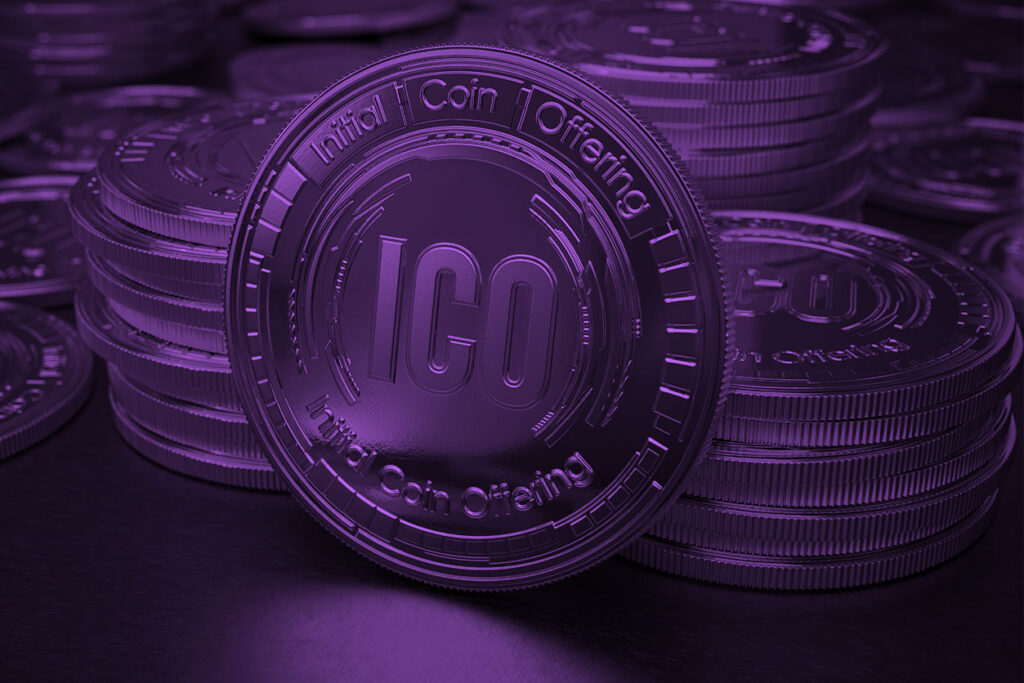What Is an ICO?

ICO stands for “initial coin/currency offering” and it is the cryptocurrency equivalent of an IPO, or initial public offering. Performed by startup companies looking to raise funds for their project, ICOs are a popular way of selling a new-born virtual currency’s first tokens to investors in exchange for potential gains. As it depends on its success of goal-funding and launch, an ICO is a speculative investment that does not guarantee the return of funds, let alone any profit.
Further to that, they can even be used as a vehicle for scams and fraud – such have been the cases of over 100 currencies coming out as copy-paste versions of each other. Traders should also be on the lookout for potential ICOs that could turn out to be flops.
The rise of ICOs
Believe it or not, Bitcoin was not the first ICO. It was actually Mastercoin and this token sale took in July 2013. Ethereum followed through in 2014 with fundraising of 3,700 BTC ($2.3 million at the time) in 12 hours. Three years later, ICOs were now trending – some were funded $35 million in less than 30 seconds, others raised nearly $100 million. Numbers were on the rise, with the highest reaching $257 million, with 70% of that within an hour.
Due to its lordship over the ERC-20 standard, that can be completely understandable. Even some of the top tokens on the market are using it, including the infamous Shiba Inu token that is taking over the world.
Despite attempts to ban ICO advertisements on famous platforms, Facebook has chosen to remain open after half a year of barring them. Tokens are being eyed on by top dogs in the industry and for some time now, word over a new type of ICO technology has been out.
Read between the lines to avoid scams
Being able to gain a notorious amount of money in mere seconds after going public can understandably be subject to scrutiny. Moreover, it can be used as a vehicle for fraudulent behavior in the form of “pump and dump” schemes. It’s gotten to a point where large-scale companies across the world have begun prohibiting ICO advertisements – those include China’s Baidu, Tencent, and Weibo; Japan’s Line; Russia’s Yandex, and others. If you’ve ever backed a kick-starting project for a product that requires several hundred or thousand dollars of an initial investment, then you can imagine how it must be for high-stake ICOs.
Tokens began being approached by authorities just as any other financial asset coming from an IPO would be. In order to shine light on some of the risks that ICOs pose for investors, the U.S. Securities and Exchange Commission (SEC) decided to perform the Howey Test in a virtual currency form. Thus, the HoweyCoin was forged. Through this test the government is able to determine that transactions such as the ones investors perform would be considered a contract. That way, any common enterprise is a subject of the law whenever it sets certain expectations but is unable to keep them legally. In most cases, this means leading investors to believing they can profit from the token’s value rising over time.
Earlier, a company that raised $100 million was mentioned. When SEC used this standard on Kik, a messaging service, it determined that it was an unregistered ICO. Meaning, any tokens brought to the US market could not be sold by investors to make profit. Its initial sale of tokens was to be deemed unlawful and subsequently, led to the company being charged. The same thing happened with another messaging app – Telegram, that had obtained $1.7 billion in fundraising. A temporary restraining order was put in action at first. A few months later, Telegram had to pay back $1.2 billion to investors and was fined $18.5 million as part of a civil penalty.
Approach even the safest of ICOs with critical eyes
Although traders aim to earn gains from price movements of tokens on the market, it is still considered good practice to be able to identify fraudulent ICOs. After all, that can also serve as a method of predicting how the price could change in the future. Here are some guiding points to make that happen:
Read the ICO’s website and whitepaper. Start-ups that have turned out successful usually propose clear goals in a straightforward manner without much roundabouts.
Learn more about the team. Companies launching an ICO should be entirely transparent and if they are not, that raises a flag of doubt.
Verify the ICO’s legitimacy. First, through regulators that have set terms and conditions for such launches. If there are none, through other methods.
Confirm the ICO funds are stored in an escrow wallet – one that requires multiple keys to be accessed. When a key is held by a neutral third party, the protection level against fraud is considered higher.
Trading on margin is high risk.

